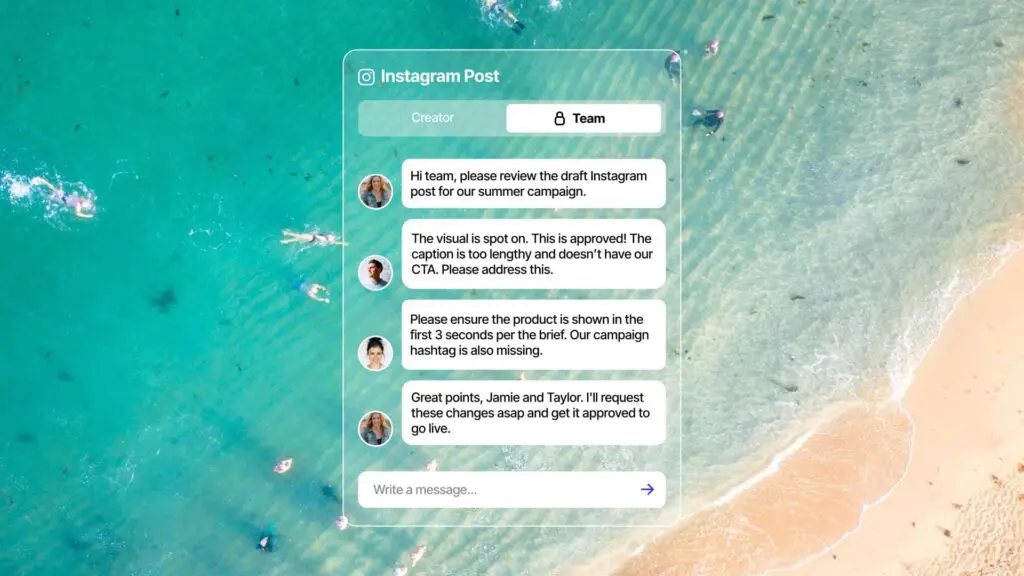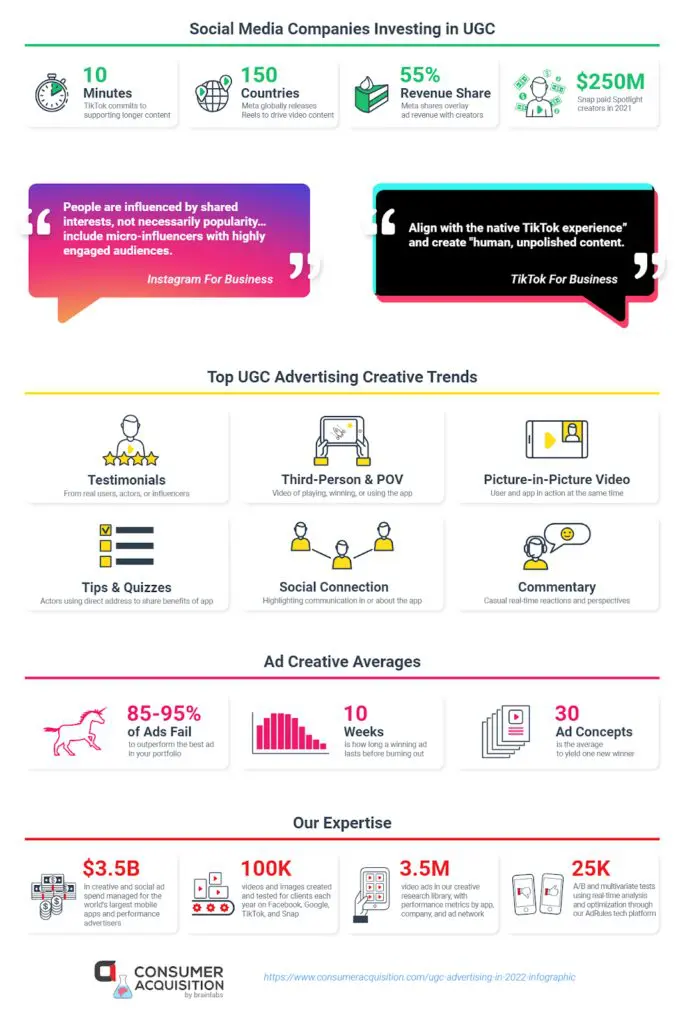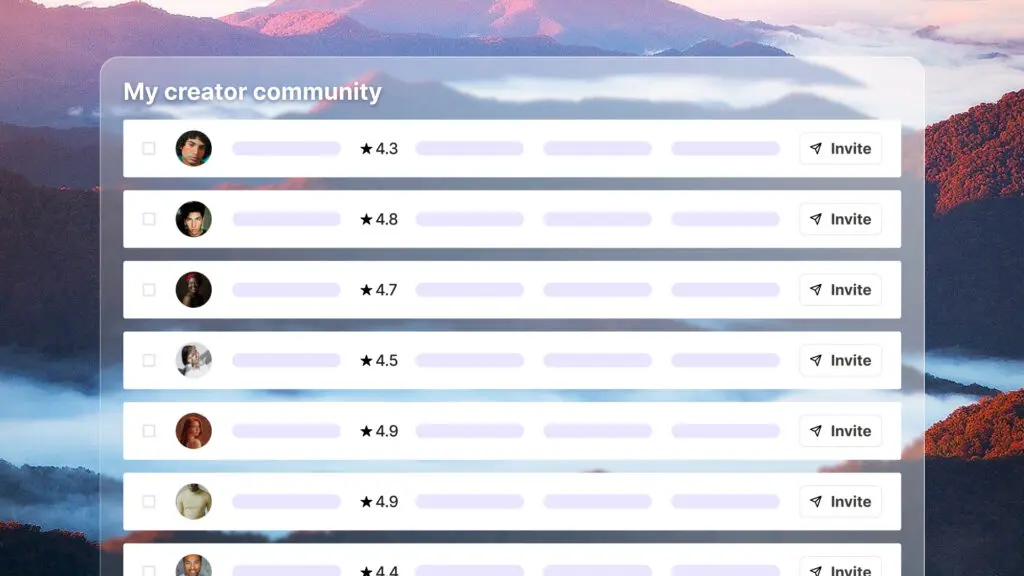

With brands constantly looking for new ways to stand out, businesses of all sizes are turning to user-generated content (UGC) to boost engagement, build brand loyalty, and drive sales by influencing the buying decisions of social media users. UCG reaches wider audiences than branded content and studies show that it gets up to 50% more attention and leads to a 29% increase in web conversions.
User-generated content is the term used to describe any content, i.e. text, images, videos, reviews, testimonials, etc, that’s created and shared by customers and individuals rather than brands themselves. It’s an essential element of social media and content marketing, as it provides authentic and relatable content that resonates with audiences. It can come from various sources, including customers, brand loyalists, employees, and UGC creators paid by brands to emulate authentic content.
User-generated content (UGC) and influencer-generated content (IGC) are both powerful and effective marketing tools that can help businesses reach their target audience. But they do differ slightly in how they’re delivered.
As we’ve shared throughout this article, UGC is content created by customers, employees and other people who want to talk about a product or brand, usually without any financial compensation. UGC is highly valued by businesses because it’s perceived by consumers as authentic and trustworthy. When customers see other people using and loving a brand’s products or services, it builds trust and makes them more likely to do the same.
IGC on the other hand is content created by influencers who are paid by brands to promote their products or services. Influencers typically have an engaged following on social media, which gives brands the opportunity to reach a ready-to-buy audience with their campaigns.
Both UGC and IGC can be used to build brand awareness, drive traffic to websites, generate leads, and boost sales. But they can also be used to achieve other marketing goals like educating customers, building relationships, and creating a sense of community around a brand.
UGC isn’t just adaptable in terms of who can create it, but also in the type of content that they can make. Here are just some of the ways that UGC content can be created:

Now of course we’re pro UGC content because we see firsthand how influencer UGC campaigns delivered through Vamp can drive business growth. But don’t just take our word for it. Here are some statistics that highlight just how effective UGC is in modern marketing strategies:
The benefits of User-generated content include:
Authenticity – UGC brings authenticity to your brand by showcasing real experiences and opinions of customers, building trust among potential buyers
Brand loyalty and community building – encouraging customers to participate in creating content fosters a sense of belonging and loyalty to your brand. This in turn leads to a strong and engaged community
Trust signal – consumers are more likely to trust UGC created by fellow customers than content produced by brands, making it a powerful trust-building tool
Influence on purchasing decisions – UGC acts as social proof, influencing consumers’ purchasing decisions by showcasing real people using and enjoying your products
Cost effectiveness – UGC is more cost-effective than traditional marketing methods or influencer campaigns as it leverages existing customers to create content
Flexibility – UGC can be used across various marketing channels, including social media, email, landing pages, and more, making it a versatile component of your marketing strategy
SEO boost – as part of your UCG strategy, positive customer reviews and surveys enhance a brand’s search engine optimization (SEO) by generating backlinks to product websites, improving keyword optimization, and increasing website traffic
Engaging community – UGC provides an opportunity for healthy discussions and interactions between brands and customers, fostering a sense of community
In order to implement UCG into your digital marketing campaign, you should do the following:
To really feel the benefits of UGC, brands need to think strategically about how they can encourage users to create product-focused content for them. Here are a few popular ways to do so:
UCG dominates TikTok where it performs 22% better than regular ads.
If you can build a network of trusted UCG creators on TikTok, you can repurpose the content for YouTube, Pinterest, Facebook and Instagram.
To learn more about digital marketing on TikTok, check out our simple guide along with our article on everything you’ll ever need to know about the platform. We’ve also got a handy guide on how to avoid TikTok trolls and another to understand the TikTok algorithm.
Want to know what great UCG content looks like? Here are some brands who have smashed it.
GoPro – the action camera brand GoPro sustains its YouTube channel primarily through UGC with top-performing videos created by customers, garnering millions of views.
LuluLemon – the Canadian athleisure brand LuluLemon encouraged followers to share photos of themselves using the #thesweatlife hashtag, expanding their brand reach and awareness.
Coca-Cola’s share a Coke campaign – Coca-Cola produced bottles with names on the front and urged customers to share pictures of their personalised drinks on social media. They kicked it off by giving out free samples in cities across the world which prompted a slew of UCG which then snowballed into the #ShareaCoke viral sensation. The brand claim it boosted US sales by 2%.
Belkin Lego iPhone cases – Belkin partnered with Lego to inspire customers to create cases for their iPhones using Lego pieces, sharing photos on Instagram with the hashtag #LEGOxBelkin
Copa90 – soccer media company Copa90 leveraged UGC on Snapchat during the 2018 FIFA World Cup to connect with younger fans and drive traffic to other channels.
Influencers can play a vital role in amplifying your UGC strategy. By collaborating with influencers, brands can reach a broader audience, gain exposure to new markets, and enhance the credibility of their UGC campaigns. Influencers act as a bridge between brands and their audience, making UGC more relatable and engaging.
To learn more, take a look at our guide to TikTok influencer marketing.
Ready to leverage the power of user-generated content for your brand? Sign up for Vamp’s influencer marketing platform, where you can source and work with creators to generate compelling UGC for your campaigns. With Vamp’s tools and partnerships with major social media platforms like TikTok, you can streamline your content creation process and maximise your marketing efforts. There’s a pricing band to suit businesses of all sizes. Let Vamp to take your brand to new heights in the digital landscape.



| Cookie | Duration | Description |
|---|---|---|
| __cf_bm | 30 minutes | This cookie, set by Cloudflare, is used to support Cloudflare Bot Management. |
| _abck | 1 year | This cookie is used to detect and defend when a client attempt to replay a cookie.This cookie manages the interaction with online bots and takes the appropriate actions. |
| _GRECAPTCHA | 5 months 27 days | This cookie is set by the Google recaptcha service to identify bots to protect the website against malicious spam attacks. |
| bm_sz | 4 hours | This cookie is set by the provider Akamai Bot Manager. This cookie is used to manage the interaction with the online bots. It also helps in fraud preventions |
| cookielawinfo-checkbox-advertisement | 1 year | Set by the GDPR Cookie Consent plugin, this cookie is used to record the user consent for the cookies in the "Advertisement" category . |
| cookielawinfo-checkbox-analytics | 11 months | This cookie is set by GDPR Cookie Consent plugin. The cookie is used to store the user consent for the cookies in the category "Analytics". |
| cookielawinfo-checkbox-functional | 11 months | The cookie is set by GDPR cookie consent to record the user consent for the cookies in the category "Functional". |
| cookielawinfo-checkbox-necessary | 11 months | This cookie is set by GDPR Cookie Consent plugin. The cookies is used to store the user consent for the cookies in the category "Necessary". |
| cookielawinfo-checkbox-others | 11 months | This cookie is set by GDPR Cookie Consent plugin. The cookie is used to store the user consent for the cookies in the category "Other. |
| cookielawinfo-checkbox-performance | 11 months | This cookie is set by GDPR Cookie Consent plugin. The cookie is used to store the user consent for the cookies in the category "Performance". |
| CookieLawInfoConsent | 1 year | Records the default button state of the corresponding category & the status of CCPA. It works only in coordination with the primary cookie. |
| csrftoken | past | This cookie is associated with Django web development platform for python. Used to help protect the website against Cross-Site Request Forgery attacks |
| elementor | never | This cookie is used by the website's WordPress theme. It allows the website owner to implement or change the website's content in real-time. |
| viewed_cookie_policy | 11 months | The cookie is set by the GDPR Cookie Consent plugin and is used to store whether or not user has consented to the use of cookies. It does not store any personal data. |
| Cookie | Duration | Description |
|---|---|---|
| __hssc | 30 minutes | HubSpot sets this cookie to keep track of sessions and to determine if HubSpot should increment the session number and timestamps in the __hstc cookie. |
| __hssrc | session | This cookie is set by Hubspot whenever it changes the session cookie. The __hssrc cookie set to 1 indicates that the user has restarted the browser, and if the cookie does not exist, it is assumed to be a new session. |
| __hstc | 5 months 27 days | This is the main cookie set by Hubspot, for tracking visitors. It contains the domain, initial timestamp (first visit), last timestamp (last visit), current timestamp (this visit), and session number (increments for each subsequent session). |
| _ga | 2 years | The _ga cookie, installed by Google Analytics, calculates visitor, session and campaign data and also keeps track of site usage for the site's analytics report. The cookie stores information anonymously and assigns a randomly generated number to recognize unique visitors. |
| _ga_56JWQ0019V | 2 years | This cookie is installed by Google Analytics. |
| _gat_UA-132076027-1 | 1 minute | A variation of the _gat cookie set by Google Analytics and Google Tag Manager to allow website owners to track visitor behaviour and measure site performance. The pattern element in the name contains the unique identity number of the account or website it relates to. |
| _gcl_au | 3 months | Provided by Google Tag Manager to experiment advertisement efficiency of websites using their services. |
| _gid | 1 day | Installed by Google Analytics, _gid cookie stores information on how visitors use a website, while also creating an analytics report of the website's performance. Some of the data that are collected include the number of visitors, their source, and the pages they visit anonymously. |
| bscookie | 1 year | LinkedIn sets this cookie to store performed actions on the website. |
| CONSENT | 2 years | YouTube sets this cookie via embedded youtube-videos and registers anonymous statistical data. |
| hubspotutk | 5 months 27 days | HubSpot sets this cookie to keep track of the visitors to the website. This cookie is passed to HubSpot on form submission and used when deduplicating contacts. |
| Cookie | Duration | Description |
|---|---|---|
| _fbp | 3 months | This cookie is set by Facebook to display advertisements when either on Facebook or on a digital platform powered by Facebook advertising, after visiting the website. |
| _pin_unauth | 1 year | This cookie is placed by Pinterest Tag when the user cannot be matched. It contains a unique UUID to group actions across pages. |
| AnalyticsSyncHistory | 1 month | No description |
| bcookie | 1 year | LinkedIn sets this cookie from LinkedIn share buttons and ad tags to recognize browser ID. |
| bscookie | 1 year | LinkedIn sets this cookie to store performed actions on the website. |
| fr | 3 months | Facebook sets this cookie to show relevant advertisements to users by tracking user behaviour across the web, on sites that have Facebook pixel or Facebook social plugin. |
| IDE | 1 year 24 days | Google DoubleClick IDE cookies are used to store information about how the user uses the website to present them with relevant ads and according to the user profile. |
| lang | session | LinkedIn sets this cookie to remember a user's language setting. |
| lidc | 1 day | LinkedIn sets the lidc cookie to facilitate data center selection. |
| MONITOR_WEB_ID | 3 months | The cookie is used by: TikTok The functionality is: to store if the user has seen embedded content. The purpose is: Marketing/Tracking |
| test_cookie | 15 minutes | The test_cookie is set by doubleclick.net and is used to determine if the user's browser supports cookies. |
| ttwid | 1 year | No description available. |
| UserMatchHistory | 1 month | LinkedIn sets this cookie for LinkedIn Ads ID syncing. |
| VISITOR_INFO1_LIVE | 5 months 27 days | A cookie set by YouTube to measure bandwidth that determines whether the user gets the new or old player interface. |
| YSC | session | YSC cookie is set by Youtube and is used to track the views of embedded videos on Youtube pages. |
| yt-remote-connected-devices | never | YouTube sets this cookie to store the video preferences of the user using embedded YouTube video. |
| yt-remote-device-id | never | YouTube sets this cookie to store the video preferences of the user using embedded YouTube video. |
| yt.innertube::nextId | never | This cookie, set by YouTube, registers a unique ID to store data on what videos from YouTube the user has seen. |
| yt.innertube::requests | never | This cookie, set by YouTube, registers a unique ID to store data on what videos from YouTube the user has seen. |
| Cookie | Duration | Description |
|---|---|---|
| li_gc | 5 months 27 days | No description |
| ln_or | 1 day | No description |
| msToken | 10 days | No description |
| wp-wpml_current_language | session | No description available. |